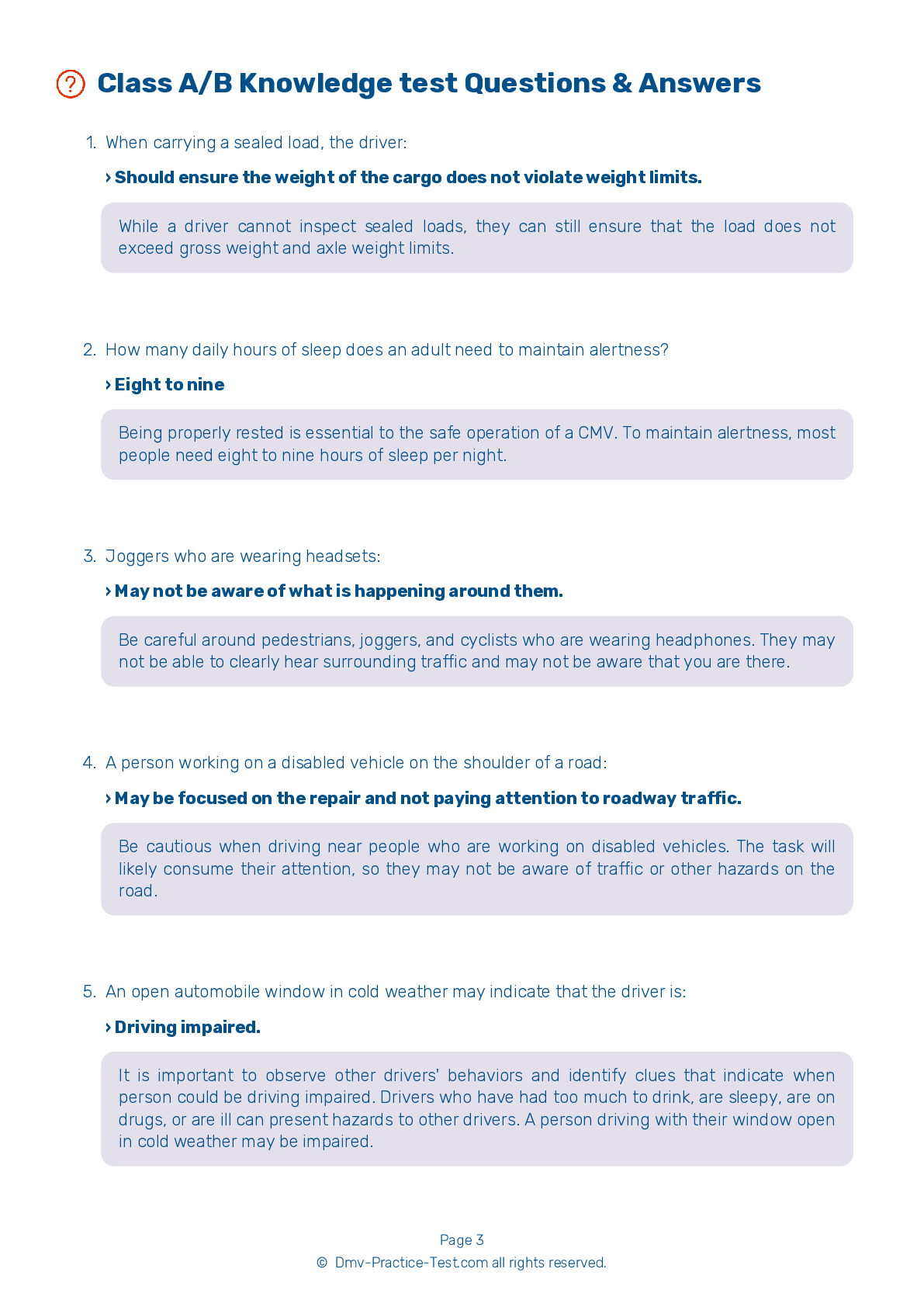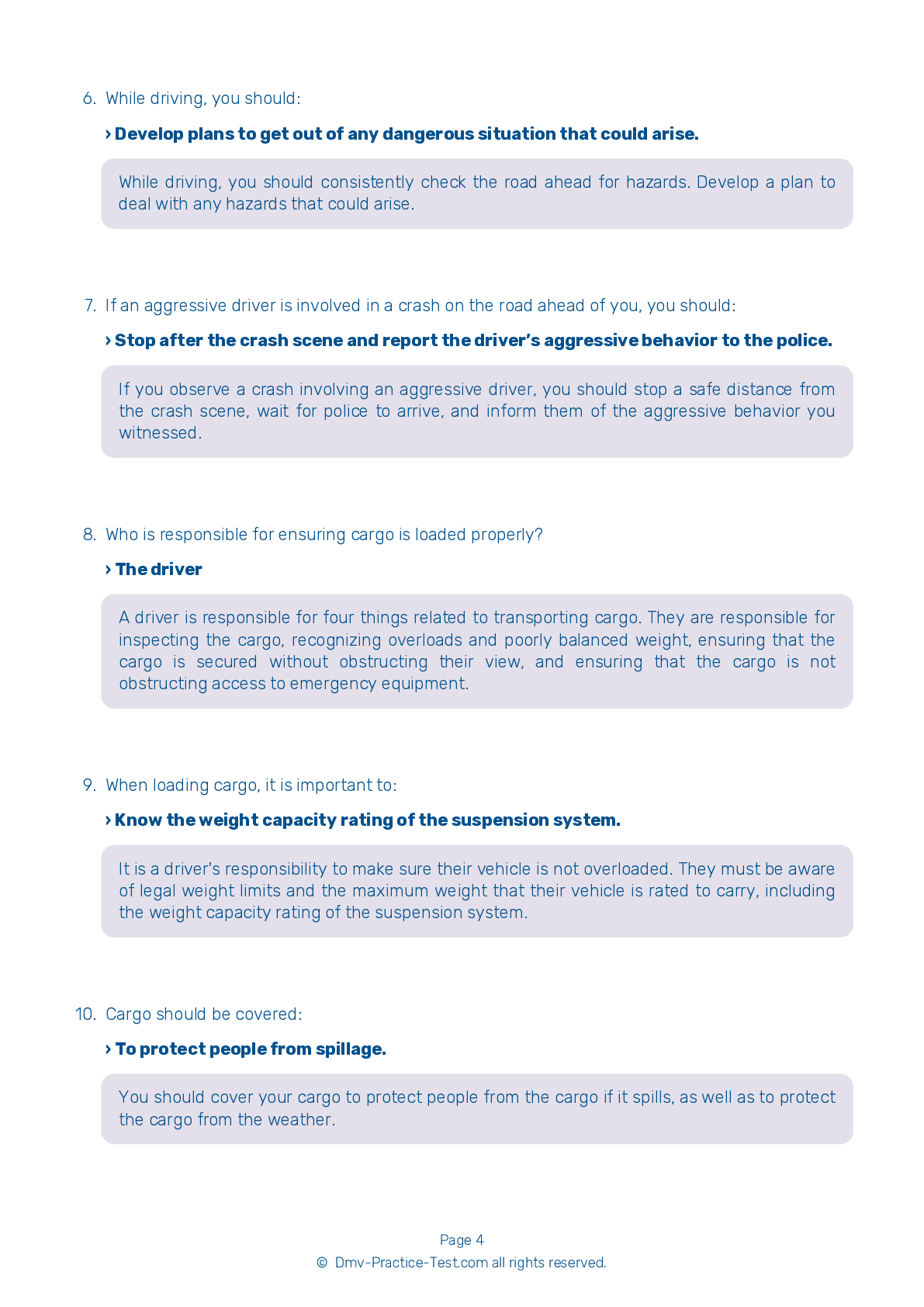Combination #1
Combination Vehicles Practice Test | North Carolina 2025 #1 Page 2 of 4
Train for FREE online with our North Carolina CDL combination vehicle test. The official exam test consists of several obligatory parts, with all of them checking your knowledge of different blocks of road rules. If you need to obtain a NC combination license in 2025, practice as much as possible. Free sample tests published on our website will help you check and improve your knowledge and boost your grades. Please bear in mind that DMV requirements for issuing a combination license may vary from state to state.
25
20
20
7 . What is a bobtail tractor?
Tractors without semi-trailers are referred to as "bobtail tractors." Bobtail tractors are difficult to operate and drivers must exercise caution.
8 . Proper coupling technique:
Can be learned over time.
Knowing proper coupling and uncoupling technique is fundamental to the safe operation of combination vehicles. Improper coupling can be very dangerous.
9 . After finishing a pre-trip inspection, you should:
Leave the rear shut-off valves open.
Before a trip, you should ensure that air reaches all air brakes on all trailers by opening up the rear emergency line and service line shut-off valves to listen for escaping air. Close both shut-off valves before beginning to drive.
10 . Watching the road ahead:
Making a sudden lane change can be dangerous while driving a combination vehicle. You can avoid the need to make a sudden lange change by looking down the road for upcoming obstacles that will require you to change lanes.
11 . When uncoupling a trailer, landing gear should be:
Firmly on the ground.
Landing gear, or trailer supports, should always be completely raised before a vehicle is driven. When uncoupling, landing gear should be lowered to make firm contact with the ground. If a trailer is loaded when it is being uncoupled, you should lower the landing gear and turn the crank a few additional times to remove some weight from the trailer.
12 . Pull out the trailer air supply control to test:
The landing gear.
Be sure to test the trailer emergency brakes before beginning a trip. After ensuring that the trailer rolls freely, you can test the emergency brakes by pulling out the trailer air supply control, or placing it in the "emergency" position. Pull forward slightly with the tractor and make sure the trailer does not move.
2025 North Carolina | Frequently Asked Questions
A CDL Class B license in North Carolina permits the holder to operate commercial vehicles weighing more than 26,000 pounds and towing vehicles not exceeding 10,000 pounds. This includes buses, farm labor vehicles, and any vehicle designed to transport 24 passengers or more, including the driver. Endorsements may be required for certain vehicles.
A Class B CDL license in North Carolina allows you to operate single or combination vehicles where the single vehicle weighs over 26,000 pounds. This includes straight trucks, large buses, segmented buses, box trucks, dump trucks with small trailers, and any vehicle designed to transport 24 passengers or more including the driver.
To acquire a Class B CDL license in North Carolina, you must be at least 18 years old (21 for interstate driving), possess a valid North Carolina driver's license, pass a DOT medical examination, successfully complete the CDL general knowledge test, and pass the skills test in the type of vehicle you plan to drive. A clean driving record is also essential.
In North Carolina, to qualify for a Class B CDL license, you must be at least 18 years old for intrastate transportation (within state lines) and at least 21 years old for interstate transportation (across state lines). Additionally, you must pass a medical examination and have a clean driving record.
Specific endorsements aren't necessary for a Class B CDL license in North Carolina but may be required based on the type of vehicle you plan to drive or cargo you're transporting. For example, you'd need a Passenger (P) endorsement to drive a bus or a Hazardous Materials (H) endorsement to transport HazMat. Each endorsement requires additional testing.
The Class B CDL skills assessment in North Carolina includes a pre-trip vehicle inspection, a basic vehicle control test, and an on-road driving test. You'll need to demonstrate your ability to inspect your vehicle, control it in different situations, and drive it safely on the road, following all traffic rules and regulations.
Yes, Class B CDL license holders in North Carolina are limited to operating vehicles with a GVWR of 26,001 pounds or more, or any such vehicle towing a vehicle not in excess of 10,000 pounds GVWR. They can't drive a combination of vehicles (like a tractor-trailer) that would require a Class A CDL. Also, additional endorsements may be needed for certain types of vehicles or cargo.
No, North Carolina does not offer the written Class B CDL test in languages other than English. This is due to Federal Motor Carrier Safety Regulations which require drivers to read and speak English sufficiently to converse with the general public, understand highway traffic signs and signals, respond to official inquiries, and make entries on reports and records.
Yes, you can request accommodations for the Class B CDL written exam in North Carolina due to disability. The Division of Motor Vehicles is committed to ensuring that its services are accessible. However, you must provide proper documentation of your disability and specify the type of accommodation needed. Contact your local DMV office for detailed information.
Yes, if you fail the Class B CDL written test in North Carolina, you can retake it. However, you must wait at least 5 days between attempts. There is no limit to the number of times you can retake the test, but each attempt requires a new fee. It's recommended to study thoroughly before retaking the test.



